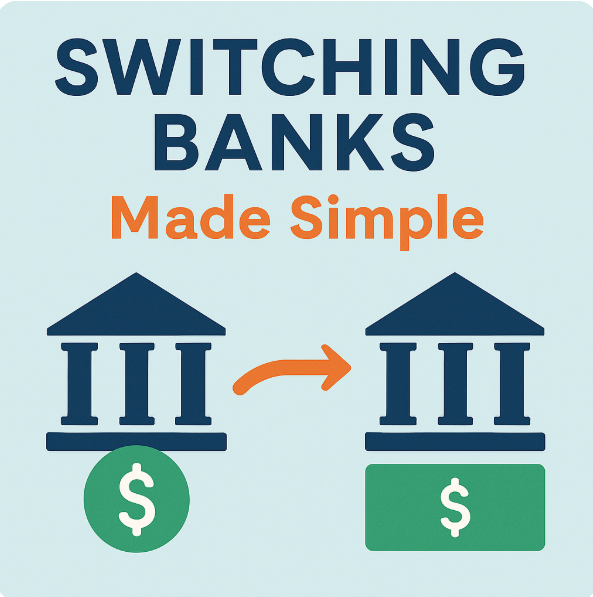
Maximizing Social Security Survivor Benefits
By Article Posted by Staff Contributor
The estimated reading time for this post is 221 seconds
One of Our goals here at Financial Middle Class is to help individuals make informed decisions regarding their financial well-being. This comprehensive guide will delve into the intricacies of Social Security Survivor Benefits.
We will explore how these benefits work, eligibility requirements, the pros and cons of receiving benefits early, benefits for children and others, blackout periods, full retirement age considerations, and strategies to maximize Social Security benefits.
Understanding these key aspects enables you to make informed decisions to optimize your financial future.
How Do Survivor’s Benefits Work?
Social Security Survivor Benefits provide financial support to the surviving family members of deceased individuals who have contributed to the Social Security system.
These benefits aim to replace a portion of the deceased individual’s lost income and offer stability to the family. Survivor benefits are calculated based on the deceased’s Social Security earnings record.
Eligibility for Survivor Benefits:
To be eligible for Social Security survivor benefits, you must be a surviving spouse, child, parent, or dependent of the deceased individual.
Let’s explore the specific eligibility criteria for each category:
- Surviving Spouse: Full survivor benefits are available to surviving spouses who have reached full retirement age. However, reduced benefits can be claimed as early as age 60. In certain circumstances, such as caring for a child under 16 or a disabled child, benefits may be available at any age.
- Surviving Children: Unmarried children under 18 years of age or up to age 19, if still attending high school, may qualify for survivor benefits. Additionally, children with disabilities that began before age 22 may also be eligible.
- Surviving Parents: If the deceased individual provided at least half of the financial support for their parents, the parents may be eligible for survivor benefits.
Applying for Survivor Benefits
Contacting the Social Security Administration (SSA) is essential to apply for Social Security survivor benefits. The application process involves submitting the required documentation, such as the death certificate, proof of relationship to the deceased, and personal identification.
The SSA will guide you through the application process and determine your eligibility.
Receiving Survivor Benefits Early: Pros and Cons
Claiming survivor benefits before reaching full retirement age has both advantages and disadvantages. Let’s consider the pros and cons:
Pros:
- Immediate Financial Assistance: Early survivor benefits provide crucial financial support during loss, helping cover daily expenses and maintain financial stability.
- Extended Support for Dependent Children: Claiming benefits early ensures continuous financial support for dependent children until adulthood.
Cons:
- Reduced Benefit Amount: Claiming survivor benefits before reaching full retirement age reduces the monthly benefit amount.
- Impact on Future Retirement Benefits: Early claiming can potentially decrease the surviving spouse’s retirement benefits if they switch to their benefits later.
Benefits for Children and Others:
Survivor benefits are vital in supporting dependent children and other qualifying individuals. These benefits help cover living expenses, education, and medical expenses until the children reach adulthood.
Additionally, divorced spouses who meet specific criteria may be eligible for survivor benefits.
Blackout Periods and Full Retirement Age:
A blackout period is between the youngest child turning 16 and the surviving spouse reaching full retirement age. During this period, survivor benefits are typically not payable.
However, once the surviving spouse reaches full retirement age, they can switch from receiving survivor benefits to their own retirement benefits if it results in a higher monthly payment.
Maximizing Social Security Benefits
To maximize Social Security survivor benefits, I recommend considering the following strategies:
- Delay Claiming Benefits: Delaying the claim until reaching full retirement age or even beyond can result in higher monthly benefits, providing greater financial security in the long run.
- Coordinate Benefits: If both spouses have their own work records and are eligible for retirement benefits, exploring different claiming strategies and evaluating which approach yields the highest combined benefits is crucial.
- Seek Professional Guidance: Consult a Certified Financial Planner or Social Security expert who can analyze your specific circumstances and provide tailored strategies to optimize your Social Security benefits.
Conclusion
Social Security Survivor Benefits offer vital financial support to families navigating the loss of a loved one. Understanding how these benefits work, eligibility criteria, and the implications of claiming benefits early.
While there are pros and cons, survivor benefits to ensure that surviving family members receive the financial assistance they need during challenging times.
By implementing strategic decisions and seeking professional advice, individuals can maximize their Social Security survivor benefits and establish a more secure financial future for themselves and their families.
RELATED ARTICLES
From Payday Loans to Junk Fees: Why Predatory Finance Targets the Middle Class
The estimated reading time for this post is 271 seconds If you’ve ever paid a $35 overdraft fee or borrowed $500 from a payday lender, you’ve felt the reach of America’s quietest predator — the financial system itself. Predatory finance...
Safe Bank Accounts: What They Are and How to Get One
The estimated reading time for this post is 145 seconds A bank account should keep your money safe — not nickel-and-dime you every month. If you’ve ever been hit with a $35 overdraft fee or had your account closed for...
1 Comment
Leave Comment
Cancel reply

From Payday Loans to Junk Fees: Why Predatory Finance Targets the Middle Class

Safe Bank Accounts: What They Are and How to Get One

Switching Banks Made Simple: A Middle-Class Guide to Beating Junk Fees
Gig Economy
American Middle Class / Oct 18, 2025
From Payday Loans to Junk Fees: Why Predatory Finance Targets the Middle Class
The estimated reading time for this post is 271 seconds If you’ve ever paid a $35 overdraft fee or borrowed $500 from a payday lender, you’ve...
By Article Posted by Staff Contributor
American Middle Class / Oct 18, 2025
Safe Bank Accounts: What They Are and How to Get One
The estimated reading time for this post is 145 seconds A bank account should keep your money safe — not nickel-and-dime you every month. If you’ve...
By Article Posted by Staff Contributor
American Middle Class / Oct 18, 2025
Switching Banks Made Simple: A Middle-Class Guide to Beating Junk Fees
The estimated reading time for this post is 267 seconds If your bank has been quietly eating away at your balance with “maintenance,” “paper statement,”...
By Article Posted by Staff Contributor
American Middle Class / Oct 18, 2025
The CFPB vs. the Banks: What America’s Consumer Watchdog Really Does
The estimated reading time for this post is 359 seconds The fight for fairness in finance isn’t fought in marble halls — it’s fought every time...
By Article Posted by Staff Contributor
American Middle Class / Oct 18, 2025
How Other Countries Protect Consumers: What the U.S. Can Learn from Abroad
The estimated reading time for this post is 269 seconds If you think American banks charge too many fees, you’re right — and you’re not imagining...
By Article Posted by Staff Contributor
American Middle Class / Oct 16, 2025
How Credit Card Rewards Can Mislead You (and How to Beat the Traps)
The estimated reading time for this post is 218 seconds The illusion (why “free points” aren’t free) Rewards feel like free money. In reality, red tape,...
By Article Posted by Staff Contributor
American Middle Class / Oct 15, 2025
Why Annual Fees Keep Going Up (and What You Get in Return)
The estimated reading time for this post is 200 seconds The give-and-take (how premium cards actually work) Premium cards are a trade: issuers “give” perks (lounges,...
By Article Posted by Staff Contributor
American Middle Class / Oct 15, 2025
Luxury Credit Cards in 2025: What’s Behind the Rising Fees?
The estimated reading time for this post is 185 seconds The short answer Premium perks got expensive (lounges, partner reimbursements, richer credits), the “perk arms race”...
By Article Posted by Staff Contributor
American Middle Class / Oct 15, 2025
Why the American Middle Class Is Watching the Credit Card Battle from the Sidelines
The estimated reading time for this post is 282 seconds I. The $900 Question Let’s be honest: most middle-class Americans can’t wrap their heads around paying...
By Article Posted by Staff Contributor
American Middle Class / Oct 15, 2025
Middle-Class Money: Choosing Value Over Vanity
The estimated reading time for this post is 160 seconds The simple framework Middle-class households win by maximizing certainty—low fees, clear cash-back, and guardrails that protect...
By Article Posted by Staff Contributor
Latest Reviews
American Middle Class / Oct 18, 2025
From Payday Loans to Junk Fees: Why Predatory Finance Targets the Middle Class
The estimated reading time for this post is 271 seconds If you’ve ever paid a...
American Middle Class / Oct 18, 2025
Safe Bank Accounts: What They Are and How to Get One
The estimated reading time for this post is 145 seconds A bank account should keep...
American Middle Class / Oct 18, 2025
Switching Banks Made Simple: A Middle-Class Guide to Beating Junk Fees
The estimated reading time for this post is 267 seconds If your bank has...




Pingback: Windfall Elimination Provision Vs. Government Pension Offset -